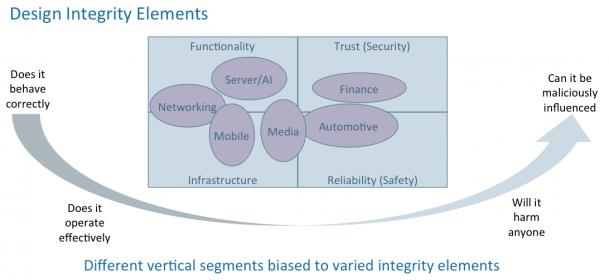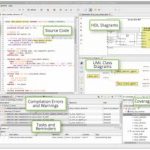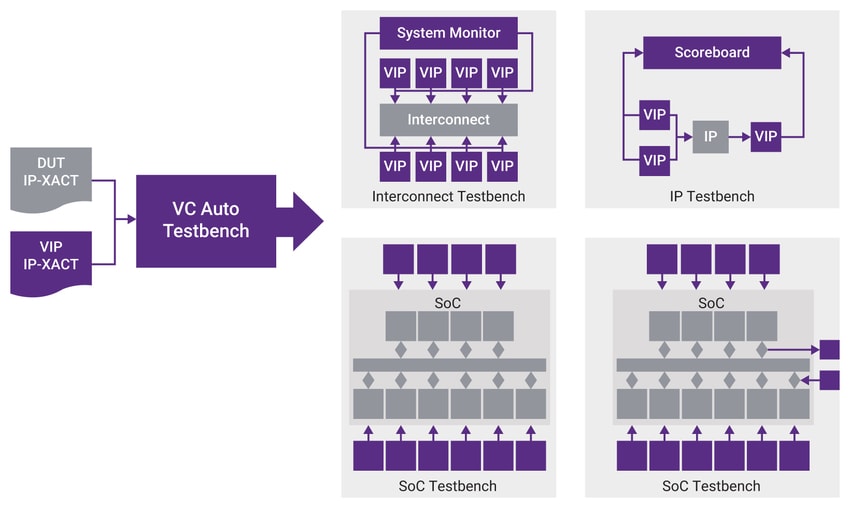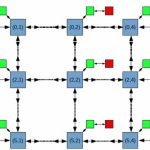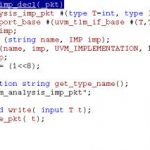Breker Verification Systems solves challenges across the functional verification process for large, complex semiconductors. This includes streamlining UVM-based testbenches for IP verification, synchronizing software and hardware tests for large system-on-chips (SoCs), and simplifying test sets for hardware emulation… Read More
Tag: uvm
Design Integrity Investment Thesis Part 2
It is important when talking about a market to first establish the need and potential growth, then determine how the market is being served. This requires examining product features and services offered. … Read More
Portable Stimulus enables new design and verification methodologies
My usual practice when investing is to look at startup companies and try to understand if the market they are looking to serve has a significant opportunity for a new and disruptive technology. This piece compiles the ideas that I used to form an investment thesis in Portable Stimulus. Once collected, I often share ideas to get feedback.… Read More
CEO Interview: Cristian Amitroaie of AMIQ EDA
AMIQ EDA has caught my attention over the last few months. My first impression was that this was just another small IDE company trying to compete with established and bundled IDEs from the big 3, a seemingly insurmountable barrier. This view was challenged by an impressive list of testimonials, not just from the little guys but also… Read More
Webinar: Fast-track SoC Verification – Reduce time-to-first-test with Synopsys VC AutoTestbench
There seems to be a general sense that we have the foundations for block/IP verification more or less under control, thanks to UVM standardizing infrastructure for directed and constrained-random testing, along with class libraries providing building blocks to simplify verification reuse, build sequence tests, verify register… Read More
Case study illustrates 171x speed up using SCE-MI
As SoC design size and complexity increases, simulation alone falls farther and farther behind, even with massive cloud farms of compute resources. Hardware acceleration of simulation is becoming a must-have for many teams, but means more than just providing emulation… Read More
Five Things To See at DVCon India 2016
DVCon is an annual Design and Verification Conference that started out in Silicon Valley, then expanded by adding India as a new location. Our semiconductor design and verification world is global in stature, so if you’re living in the region then consider registering for this event held Thursday and Friday, September … Read More
A New Player in the Functional Verification Space
Israel has a strong pedigree in functional verification. Among others, Verisity (an early contributor to class-based testbench design and constrained random testing) started in Israel and RocketTick (hardware-based simulation acceleration), acquired more recently by Cadence, is based in Israel. So when I hear about an … Read More
Learn How to Debug UVM Test Benches Faster – Upcoming Synopsys Webinar
UVM for developing testbenches is a wonderful thing, as most verification engineers will attest. It provides abstraction capabilities, it encapsulates powerful operations, it simplifies and unifies constrained-random testing – it has really revolutionized the way we verify at the block and subsystem level.
However great… Read More
Reusable HW/SW Interface for Portable Stimulus
Although semiconductor community has ushered into the era of SoCs, the verification of SoCs is still broken. There is no single methodology or engine to verify a complete SoC; this results in duplication of efforts and resources for test creation and verification at multiple stages in the SoC development, albeit with different… Read More




